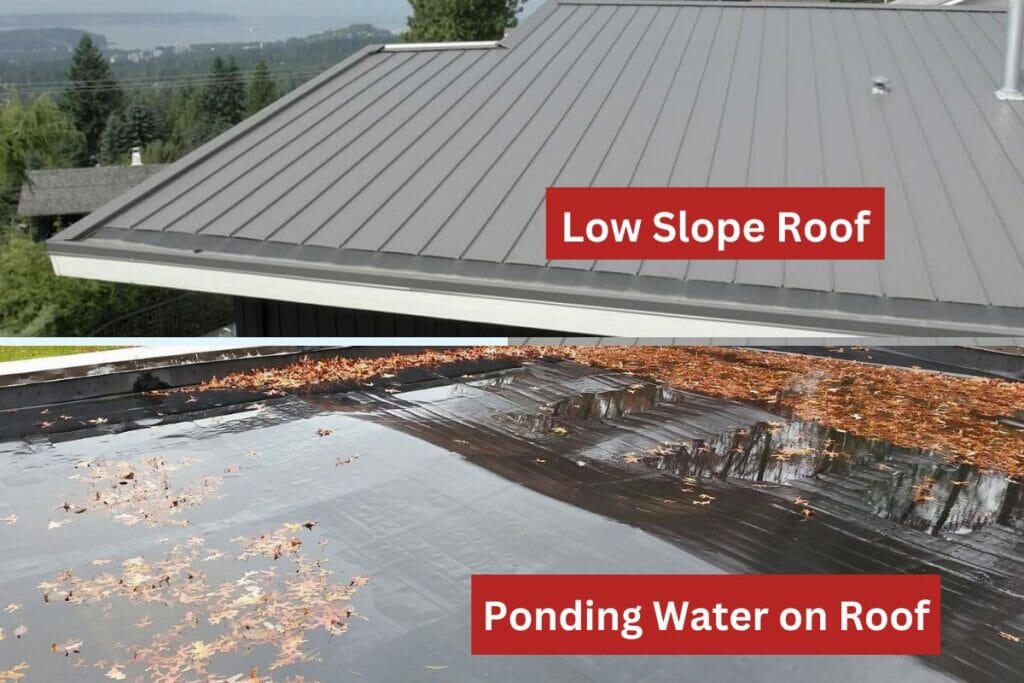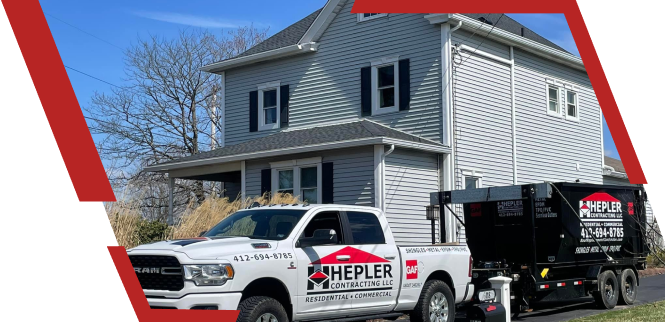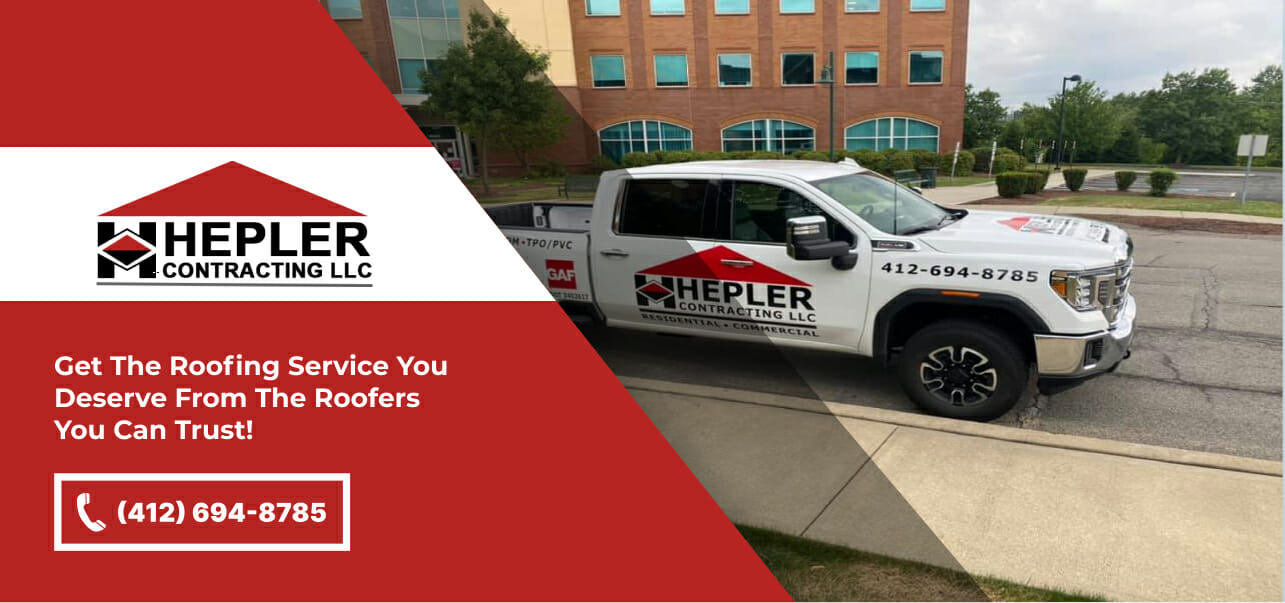Low-slope roofs, or flat roofs, are a popular choice for commercial buildings due to their practicality and space-saving advantages. However, like any other type of roofing system, low-slope roofs are prone to specific problems that can affect their longevity and performance. This article will explore the top six issues commonly associated with low-slope roofs and discuss practical solutions to fix them.
The Top 6 Problems With Low Slope Roofs and How to Fix Them
1. Ponding Water and Drainage Issues
One of the main challenges faced by low-slope roofs is the accumulation of water, commonly called ponding. Due to the minimal pitch of these roofs, water often fails to drain properly, leading to significant problems if left unaddressed. Ponding water can cause leaks, accelerate roof deterioration, and even result in structural damage.
Solution – To fix ponding water issues, it is crucial to ensure proper roof slopes and effective drainage systems. It is important to perform regular inspections to identify sections with insufficient slopes or drains that may be clogged. Installing additional gutters, creating tapered insulation systems, or using innovative products can help correct the slope and improve water flow, preventing ponding and subsequent damage.
2. Leaks and Moisture Intrusion
Leakage and water intrusion are common problems associated with all types of roofs, including low-slope ones. When leaks occur, the water can seep through the roofing membrane, leading to interior damage, mold growth, and compromised structural integrity.
Solution – Regular roof inspections are essential to address leaks and moisture issues. Any signs of damage, such as cracks, blisters, or deteriorated flashing, should be promptly repaired. Applying weatherproof coatings or sealants can also provide additional protection against water intrusion. It’s also crucial to ensure the proper installation of flashing and moisture barriers during roof construction or repair.
3. Roof Membrane Damage and Deterioration
The roof membrane of a low-slope roof is a vital component that protects the building from external elements. Over time, the membrane can become damaged or deteriorate due to various factors, including foot traffic, extreme weather conditions, and improper installation.
Solution – To fix roof membrane issues, it is important to conduct regular inspections to identify any signs of damage, such as tears, punctures, or wrinkles. Prompt repairs or replacements should be carried out to maintain the integrity of the membrane. Creating designated walkway paths or using additional membrane layers can help minimize damage caused by foot traffic.

4. Thermal Expansion and Contraction
Low-slope roofs are exposed to constant temperature fluctuations, which can lead to thermal expansion and contraction. As the roof materials expand and contract, stress is exerted on the roofing system, potentially causing cracks, splits, or other forms of damage.
Solution – To mitigate the effects of thermal expansion and contraction, selecting roofing materials that can withstand temperature changes is crucial. Regular inspections should be conducted to recognize any signs of damage, like cracks or splits. Applying roof coatings or using insulation materials with high thermal resistance can minimize the impact of temperature fluctuations on the roofing system.
5. Poor Installation and Workmanship
Proper installation is important for the longevity and performance of any roofing system, including low-slope roofs. Poor installation techniques or substandard workmanship can lead to many problems, including leaks, membrane damage, and premature roof failure.
Solution – To address installation issues, hiring experienced and reputable roofing contractors who specialize in low-slope roofs is essential. Proper surface preparation, adhesion techniques, and adherence to industry standards are necessary during installation. Regular inspections and quality control measures should also be implemented to ensure the roof is installed correctly and according to manufacturer guidelines.
Before proper installation, a roof inspection is needed. If you want to schedule a roof inspection from our team, reach out to us today.
6. Lack of Regular Maintenance
Regular maintenance is critical to preventing and addressing potential problems with low-slope roofs. Unfortunately, many building owners neglect routine maintenance, which can lead to more significant issues and costly repairs in the long run.
Solution – To avoid problems caused by a lack of maintenance, it is vital to establish a proactive maintenance plan. Regular inspections are important and should be conducted to identify any signs of damage or deterioration. Once identified, prompt repairs such as fixing minor leaks or replacing damaged flashing, should be carried out to prevent further damage. Implementing a preventive maintenance program, including regular cleaning, gutter clearing, and inspections, can significantly extend the lifespan of a low-slope roof.
Why You Choose Us For Your Low-Slope Roofing Needs
Low-slope roofs in Pittsburgh face common issues like ponding water, leaks, membrane damage, thermal expansion, poor installation, and lack of maintenance. Hepler Contracting specializes in tailored solutions for these problems and more. Our experts conduct regular inspections, prompt repairs, and adhere to industry best practices, ensuring the longevity and performance of your roofing system. Trust us to protect your building with reliable solutions—call (412) 694-8785 today!


